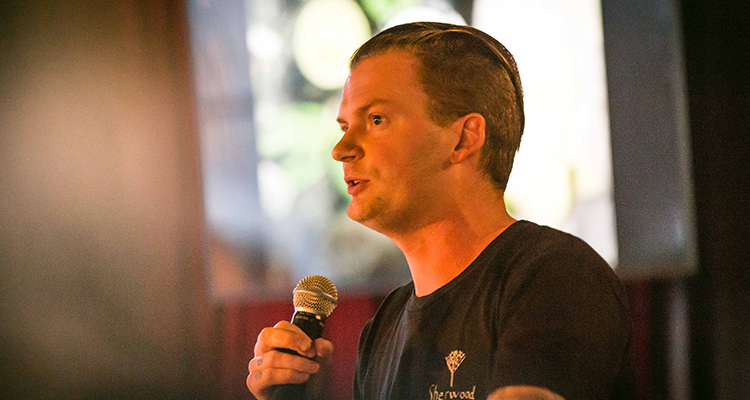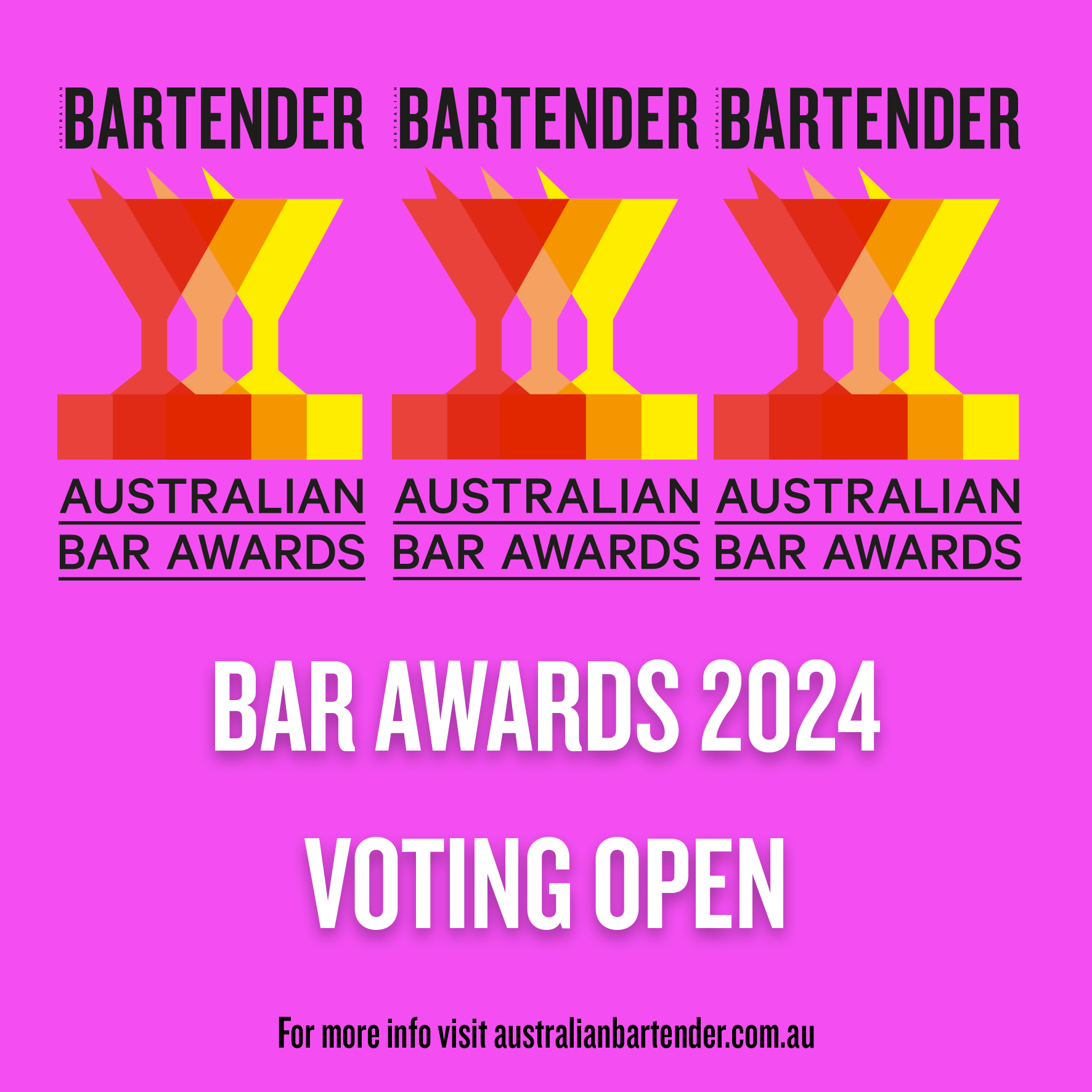
You might think that implementing a sustainable bar program is a big investment — and you know what? It does take an investment — of time, money. But you can save dollars whilst taking small steps to save the planet.
That’s the lesson gleaned from a talk by Fraser Brown of the Sherwood, Queenstown, that competitors in the 42BELOW Cocktail Earth Cup were treated to. The Sherwood is a hotel, bar, and kitchen, and Brown has recently put in place a zero waste to landfill policy. Here’s a lightly edited transcript of his talk.
Kitchen garden — feeds your drinks, while you feed it your waste
The Sherwood put in a kitchen garden on an underutilises space of land at the hotel. The benefits of this are they get access to fresh produce — without it needing to be shipped in — and for the bar, that means an abundance of herbs. But that’s not all.
“The great news of having a garden is that you get to have a compost — we’ve got two,” Brown said. “We’ve got a biothermic digester, this has the ability of burning through about 100kgs of waste a week, and will go through blood and bone as well.
“It produces nice, healthy organic soil to go on the garden.”
Now we had the great challenge of reducing our waste,
1. Do an audit, so you know how much waste you have
The first step in reducing your bar’s impact on the environment is understanding what you’re throwing away.
“This is industry is, at times, hugely wasteful,” said Brown. “We throw out wheelie bins of stuff, for what?
“The first challenge was an audit: we saved all of the waste from the hotel, the restaurant and the bar for a whole week; in summer, probably not the best idea. We laid out sheets on the ground and basically counted everything we’d wasted. We separated everything out in piles, and counted what was our waste. One of the great things about sustainability is figuring out, what is your waste? What are you putting in the bin in the first place? For all of my existence you just go up and put something in the bin, it disappears like magic. We wanted our staff to know what we were throwing away.
“We went to the bar, it had a breakdown that you’d probably expect: 60 percent was glass, all mixed; then packaging, the boxes and cardboard that it came in; then the rest was organic — your fruits, all your offcuts. This was a really interesting insight into what we produced on a weekly basis here.
“So where do we take this, where do we go? We went to our waste processing centres. We swung into them, and were like we’ve got all of this waste, what happens? What we wanted to do was close this journey off. We buy it, it comes to us, the customer uses it, and we throw it in the bin. Where does it go? What happens to my waste?
I know how much waste, and what’s in it, I know what can be recycled and we’re in queenstown far away from everything, so what can we do?”
2. Now, start to reduce that waste?
After understanding just how much they waste, Brown could then make steps to reduce it.
“How do we make that smaller? Reducing, that was the key. Not just recycling and putting it in the right bin, but how much less can we make. We start with the bar — what can we reduce? All of our bottled beers and cans, gone. We’ve got them in kegs. Done.
“Next is the wine. So wine bottles, we now have keg wines. It was designed to give us access to wines that you can’t get. We go to the vineyards, we barrel select the wine, they then put it in a holding tank and when we call on it, it gets put in a keg. The keg gets delivered straight from the winery to here — it’s about 45 minutes for most of the wineries — and misses out on the entire transportation process that most distribution companies use, which is to send it to Auckland or Christchurch, then back to us.
“Secondly, we saved all our wine bottles that we were throwing away every day, washed them, and refilled them. We’ve now cut out 60 percent of our wine bottle wastage just by doing this. There is an investment, but it’s an investment that pays off, because our bins are less full and we don’t have to pay for so many of them to be taken away.”
3. Once you’ve reduced, you need to reuse
“Once we reduced what we were recyclling, we had to reuse,” said Brown. “It was simple: every tonic bottle, keep it. Why? Because it’s 200ml — that’s a perfect single serve cocktail size. Boom. That can be dispensed to rooms and served to customers.
“You’ve probably tried pre-batching cocktails yourselves — it gives you good quality control and saves you wastage, but if you pre-bottle it you’re using a bottle from before and you’re also being sustainable. It’s such a simple step.
“We looked at other things we were using — corks. How many corks do we get? Hundreds of corks we get and we’re throwing them out. Remember that pre-batched cocktail? Well we put a cork in it. The cork gets reused again. Then we take the rest of the corks, grind them down, and put them on the compost heap because they’re an organic compound.
“Bar napkins — out the window, they’re not happening. Why? Because they’re not necessary, you can cloth wipe that table.”
“The whole time, customer satisfaction is paramount. It’s about what are they getting, and is it good enough or better than it was before? Of course you still get the story of telling them why you’re doing it; everyone knows about sustainability, we don’t even need to talk about the amount of waste in the world, it’s just about saying this is why we’re doing it.
“Take the wine for example: some people would be like that’s a bottle of wine with no label on it. What is this cheap nasty wine that you’re giving me? But then you sit there and explain to them the nuts and bolts of what you just did, and it will totally change their mind. Then you sell them three more.”
4. Recycling — close the loop
The recycling step is about closing the loop, and avoiding adding to landfill, Brown said.
“We still have the last one: recycling. What are we actually recycling? Glass in most parts of the world gets put together — brown, clear, green, pink, whatever colour it is — it’s ground up and used down here as an aggregate in roads, it doesn’t become glass again. That’s not a sustainable practice, it’s a non-closed loop — it’s a downward spiral.
“I went to our glass guys, and they got in touch with [a foundry in] Auckland, they make glass from glass, and they now have our direct contract. What we do is seperate at the bar: we got rid of our beer so it’s just white and green [glass] now. White and green go together and get shipped to Auckland and turned into bottles. It doesn’t have to go to China, and it doesn’t have to go into roads.”
Brown and his team aren’t done there — the project continues.
“What’s next? We’ll take all our soda bottles, we’ve spoken with our soda companies and said: can you give me that in a bag and box?” said Brown.
“Remember the Coke gun things? They’re fantastic. Why? They’re shipping ten litres of the syrup to you — you’ve already got the water, it’s coming out of the tap. You don’t need that water in it, and we can brand with glasses and straws and stuff. So we’ve already started communicating with them, it’s just [this]: how can we get your awesome product in a format that’s going to reduce my waste and my impact as well?
“We talked to some of them about can we just return your property to them, there’s some like Cadrona Distillery, Rogue Society, they’ve all said yes — especially the spirit bottles because some of them are super nice, they spent a ton of cash making that all you’re going to do is empty and tip it out, they were real happy to take it back. It’s fantastic, reusing and returning, just working with our partners makes a massive difference.
5. Make it a selling point for your customers
“One of the things that sustainability means is living within your means — that’s actually what the word means,” he said. And he’s a huge believer in the role that people in hospitality can play in changing people’s minds.
“It’s something that we have, it’s a power we have working in this great industry, we can connect to all manners of people and can get in their ear. We can show them how cool things can be when you’re being an environmental eco-warrior at the same time you’re drinking an awesome Manhattan. I want my customers to go into other places and ask, “why don’t you have that?”
“It’s just asking questions, informing ourselves and all the staff, and by doing that we can inform the customers, which empowers them to want to be here and spend more and have a great time.”
You can check all the action from the 42BELOW Cocktail Earth Cup on social media with the hashtag, #42CEC. For more on how to implement your own sustainable bar program, check out the new series from Australian Bartender & 42BELOW, The Sustainable Bar.


